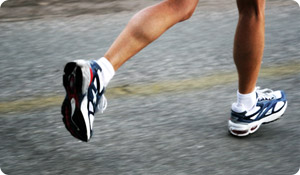
Sometimes exercise feels like a kick in the shins. That's because our tibia, the long bone that runs from the foot to the knee is vulnerable to stress. Shin splints, also known as medial tibial stress syndrome, is a painful condition that prevents some people from getting enough exercise. What causes this problem and what can you do to prevent and treat shin splints?
What are shin splints?
Every day, millions of Americans head out for a run, basketball game, or a long evening of dancing. The next day, their shins are screaming and every step delivers a jolt of pain. The tissues surrounding the tibia-muscles, tendons and periosteum (the tissue that surrounds the bone) and even the tibia itself-become inflamed from too much use or uneven stress. This inflammation causes pain along the inner part of the lower leg and maybe even a little swelling.
What causes shin splints?
Shin splints are a reaction to too much (or the wrong kind of) exercise or improper support or shock absorption for your legs. According to the American Association of Orthopedic Surgeons says, Shin splints often develop after sudden changes in physical activity, such as running longer distances or on hills, or increasing the number of days you exercise each week. Flat feet are another factor that can contribute to increased stress on the lower leg muscles during exercising
Shin splints can be caused by:
- Running downhill
- Running on a slanted or tilted surface
- Running in worn-out footwear
- Engaging in sports with frequent starts and stops, such as basketball and tennis
- Over pronation-a natural gait variation that causes your feet to roll inward when you walk or run.
How do you treat shin splints?
Most cases of shin splints can be treated at home with rest, ice, and over-the-counter anti-inflammatory medication like ibuprofen. Below are some additional tips:
- Eliminate all aerobic activities that include impact, like running, soccer or whatever sport/activity caused the shin splints in the first place. You might need to rest for several weeks. Try swimming, elliptical trainer, stretching or biking, as long as it doesn't cause pain.
- After the initial injury has healed, the next step is preventing another event.
- Go to a professional athletic shoe store and have your gait evaluated. Then, buy the right shoes for your sport, arch-type, and gait.
- If you have flat feet or low arches, purchase over-the-counter or custom made arch supports.
- Don't push yourself to exercise at your pre-shin splint level. You'll have to condition your legs to handle that level of stress again.
- Take it easy the first few times you head back out. Start with walking, but not too far, not too fast, and avoid hills. Warm up and stretch before you get too vigorous. Add distance, duration, speed or elevation to your workout one at a time and spaced about a week apart.
If pain returns, quit exercising immediately. Ice your shin and rest. That's evidence you're doing too much. Be patient and allow your shins to set your pace. If you don't, you'll be kicking yourself in the shins again.
Sources:
American Academy of Orthopaedic Surgeons
http://orthoinfo.aaos.org/topic.cfm?topic=a00407
Mayo Clinic
http://www.mayoclinic.com/health/shin-splints/DS00271





